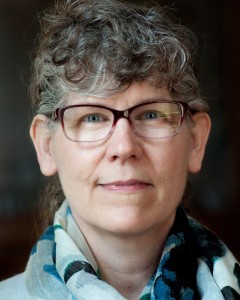Yes, it matters who sits next to you in school, and life
- likoau
- Jun 29, 2015
- 3 min read
Great Schools for All is singularly focused on ending the concentration of poverty in city schools. We are committed to scocioeconomic integration of schools across the county — aiming to cap the number of low-income students in any one school at 40 to 50 percent of the student body.
But many people wonder why integration matters at all. If schools have adequate resources, shouldn’t that be enough? Does it really matter where you go to school, or who you sit next to, or how many poor students are in your building? Yes, it does matter, and there is plenty of research to back that up.
Mark Hare is a member of the GS4A leadership team
But sometimes you have to look beyond the school to understand why. Two years ago, I wrote a report on a pilot program for RocCity SCHOLARS—an organization that sought to identify exceptionally academically gifted freshmen at East High, kids who might be able to succeed at one of the country’s elite colleges if they had the right supports.
The scholars selected for the program were surrounded not just with tutoring help, but with a full range of cultural bridges to prepare them for the world that awaited them: behind-the scenes visits to the RPO, Rochester City Ballet, the Memorial Art Gallery, GEVA Theater; book discussions with professors and students at area campuses; major sporting events; college visits; meals at elegant restaurants; shopping trips to update their wardrobes. The idea was to be sure that they were prepared, not just academically, but socially and culturally, for campus life at a school where most of the other students come from very affluent or wealthy families.
There was almost no chance that these gifted students would find their way out of extremely poor neighborhoods or into an elite college without the relationships they found with RocCity SCHOLARS — a network of successful adult mentors (called “scholar guides”) who could connect them to the world beyond their schools and their neighborhoods.
One of the report’s most telling comments came from the East High School police resource officer, who said, “They (the students) are never engaged in anything beyond their neighborhoods; their world is the school, their home and the corner store.” Poverty for these kids means isolation and isolation means they can live their whole lives without seeing a path forward.
We all need constant contact with people who know how to succeed, who can encourage us, point us in the right direction and help us build the networks of connections that are essential to success.
Kids in high poverty schools rarely have those relationships. That’s why it matters where you go to school, or who you sit next to, or how many poor students are in your building.
And in Rochester the isolation that is poverty is even more pronounced than it is in most places.
Zeroing in on Place and Race is that latest in the Measure of America series by the Social Science Research Council. The paper compares the rates of “youth disconnection” among 98 U.S. cities.
“Disconnected youth are teenagers and young adults between the ages of 16 and 24 who are neither working nor in school,” the report says. It further states, “The costs of disconnection are high, both for individuals and for society. Disconnected youth are cut off from the people, institutions, and experiences that would otherwise help them develop the knowledge, skills, maturity, and sense of purpose required to live rewarding lives as adults.
“Our research shows that … residential segregation by race disproportionately harms black teenagers and young adults.”
So where does Rochester stand on this indicator? We rank 47th out of 98 metro areas for the average rate of disconnection. Our 13.4 percent rate is slightly better than the national average of 13.8 percent.
The Rochester rate of disconnection among white youth is 9.8 percent — well below the national average of 11.3 percent. But the disconnection among African American youth is a distressing 30.8 percent, well above the 21.6 percent national average. Only Baton Rouge, LA, and Las Vegas, NV, have slightly higher rates of disconnection among African American youth.
Most telling is the gap between white and black disconnect rates: 21 percent in Rochester— the highest gap among all the cities surveyed.
Race and place matter, the authors of the Measure of America series conclude, and together they can pack a devastating blow to a community.
School integration alone won’t solve the crisis of inequality in our community, but it is an essential part of any solution. The truth is, where you live, who you interact with, and who sits next to you in school dramatically shape your chances of success.







Comments